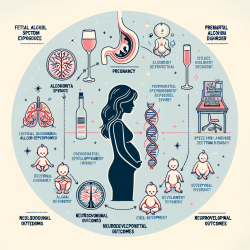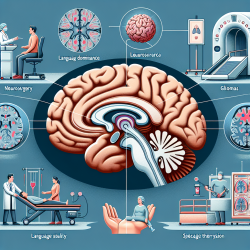In the realm of speech therapy, understanding the nuances of oral stereognosis—the ability to recognize and discriminate objects in the mouth—can significantly enhance the effectiveness of therapeutic interventions. The recent study titled Effect of Varying Intra-oral Duration, Within-pairs Interval and Between-pairs Intervals on Measures of Oral Stereognosis by Kenneth G. Smith, Daniel S. Beasley, and Y. Pal Kapur provides valuable insights into how temporal variables affect oral stereognosis measurements. This blog aims to help practitioners at TinyEYE implement these findings to improve their clinical practices.
Key Findings from the Research
The study explored how different intra-oral durations, within-pairs intervals, and between-pairs intervals impact oral stereognosis in young adults. Here are the key findings:
- Within-pairs Interval: As the interval between the two items in a pair increased, the error rate also increased. Specifically, a seven-second interval led to significantly more errors compared to three-second and five-second intervals.
- Between-pairs Interval: Conversely, increasing the interval between pairs resulted in fewer errors. A nine-second interval was more effective in reducing errors compared to five-second and seven-second intervals.
- Intra-oral Duration: The length of time the forms were retained in the mouth (3, 5, or 7 seconds) did not significantly affect the error rates, corroborating previous research by Torrans and Beasley (1975).
Implications for TinyEYE Therapists
These findings have several practical implications for speech therapists using TinyEYE's online therapy platform:
- Optimize Within-pairs Intervals: To minimize errors during oral stereognosis tasks, keep the within-pairs interval to five seconds or less. This ensures that the temporal gap between items is not too long, which could otherwise increase the likelihood of errors.
- Adjust Between-pairs Intervals: Allow at least nine seconds between pairs of forms. This extended interval helps reduce error rates, possibly by allowing the memory trace of prior stimuli to fade, thus minimizing interference with subsequent tasks.
- Intra-oral Duration: While the study found no significant effect of intra-oral duration on error rates, it is advisable to maintain consistency in the duration for which forms are retained in the mouth. This helps standardize the testing conditions and ensures reliable data.
Encouraging Further Research
While the study provides valuable insights, it also highlights the need for further research, particularly in the following areas:
- Age and Pathology: Investigate how temporal variables interact with age and various pathologies. This can help tailor therapeutic interventions for different age groups and clinical conditions.
- Clinical Testing: Future studies should explore the applicability of these findings in clinical settings, particularly for children and individuals with articulatory impairments.
- Memory Trace Effects: Further research is needed to understand the impact of memory trace on oral stereognosis tasks. This could lead to more effective therapeutic strategies that account for cognitive factors.
By incorporating these research findings into their practice, TinyEYE therapists can enhance the accuracy and effectiveness of their oral stereognosis assessments, ultimately leading to better therapeutic outcomes for their clients.
To read the original research paper, please follow this link: Effect of Varying Intra-oral Duration, Within-pairs Interval and Between-pairs Intervals on Measures of Oral Stereognosis.










